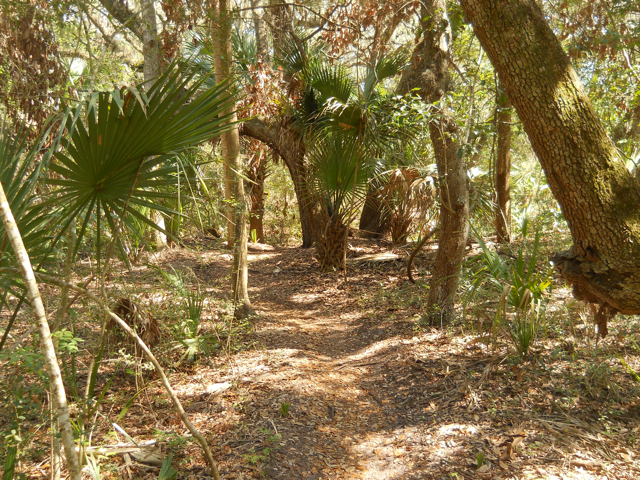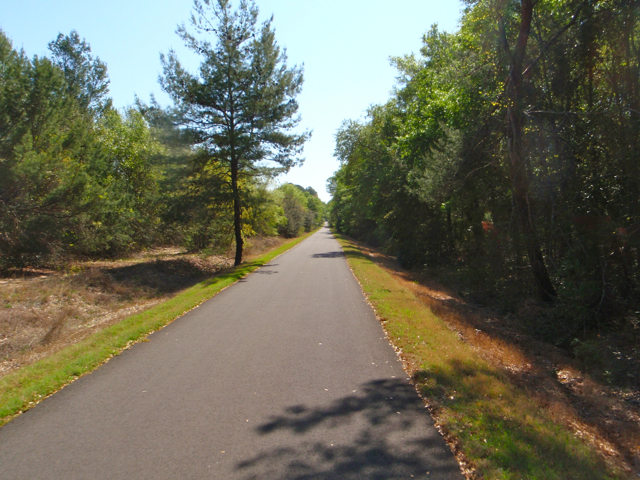It is designed as a place for families and I was solo, but I still enjoyed the afternoon, especially the scenery from the three different glass-bottom boat rides, though only the boat that leaves the main dock concentrates on the actual springs and the underwater views. Silver Springs is a magnitude 1 spring that pumps out 550 million gallons of sparkling-clear water every day, enough to supply the entire city of New York. Silver Springs’ popularity flourished after Hullam Jones invented the glass bottom boat here in 1878. By installing a glass viewing box on the flat bottom of a dugout canoe, he created a window to this underwater world teeming with fish, turtles, crustaceans, fossils, and several sunken vessels. Of course the boats are improved now as seen here (and all are propelled by electric motors)...
The "Lost River Voyage" cruise leaves from a dock built next to the shack (photo below) used by Lloyd Bridges in his "Sea Hunt" television series which filmed over 100 episodes here from 1958-1961. In fact, dozens of movies, television episodes, documentaries, and commercials have been filmed here including six of the original Johnny Weissmuller "Tarzan" movies, two James Bond films, and the TV show "I Spy." (All are listed by year on their website.)
Colonel Tooey, a concessionaire who operated the Jungle Cruise boat ride (now Fort King Cruise), established a troop of wild rhesus monkeys on an island in the Silver River to lend authenticity to his jungle cruise, but he didn't do his homework because the rhesus monkeys were excellent swimmers and they quickly escaped forming wild troops along the river, and I saw a number of their offspring when I kayaked the river and got this shot. Their numbers had reached a high of 1600 so the Ocala National Forest set up feeding stations with food augmented with birth control, and the numbers now are estimated around 400 monkeys.

This cruise used to feature exotic animals but they were sold off some years back and now the shore has historical replicas showing Silver Springs’ history including an archaeological dig site, a Seminole Indian village, the 1830s Fort King Army stockade, a late 1880s riverboat dock and train depot, and an authentic Florida pioneer “Cracker” homestead.
Owners of this park over the years included American Broadcasting Company which added 3,900 acres of surrounding land, but in 1993 it was sold to the state of Florida and since then a string of private companies have been managing the park under a long-term lease agreement.
In 1972 Silver Springs was declared a registered Natural Landmark by the United States Department of the Interior and the National Park Service and in 1973 Silver Springs began a Wildlife Rehabilitation Program designed to rescue and rehabilitate animals injured in the wild. The park abuts the Ocala National Forest's 383,000 acres.
In addition to the magnificent scenery of the river and the beautiful landscaping of Silver Springs’ botanical gardens that feature more than 138 varieties of native and exotic plants, my favorite aspect was the animal collection, including a number of seldom seen critters such as this East African Crowned Crane...
...and the rare White Alligator (they have two of them) among the rarest reptiles in the world. Known as the "Swamp Ghost", these eerie and fascinating creatures are a natural phenomenon devoid of color pigment yet protected from the sun. Legend has it that those who gaze into the pink eyes of the white alligator will be blessed with good luck for the coming year and prosperity will surely follow.
One of my favorites was seen from the jeep-tram "Safari" ride. She is a Belted Galloway Cow named "Oreo" for obvious reasons...
Big Gator Lagoon is a one-acre cypress swamp habitat featuring more than three dozen of Florida’s largest alligators, most 11 to 13 feet in length! Guests observe these large reptiles from the safety of an elevated boardwalk and many photographs were being snapped of them during my visit!
The "World of Bears" features a number of black bears as well as three Kodiak brown bears, earth's largest land carnivore...
Other critters included llamas, rheas, emus, marmosets, giraffes, numerous types of crocodiles, turtles and tortoises, cougars, Florida panthers, flamingos, and many more I can't recall.













































